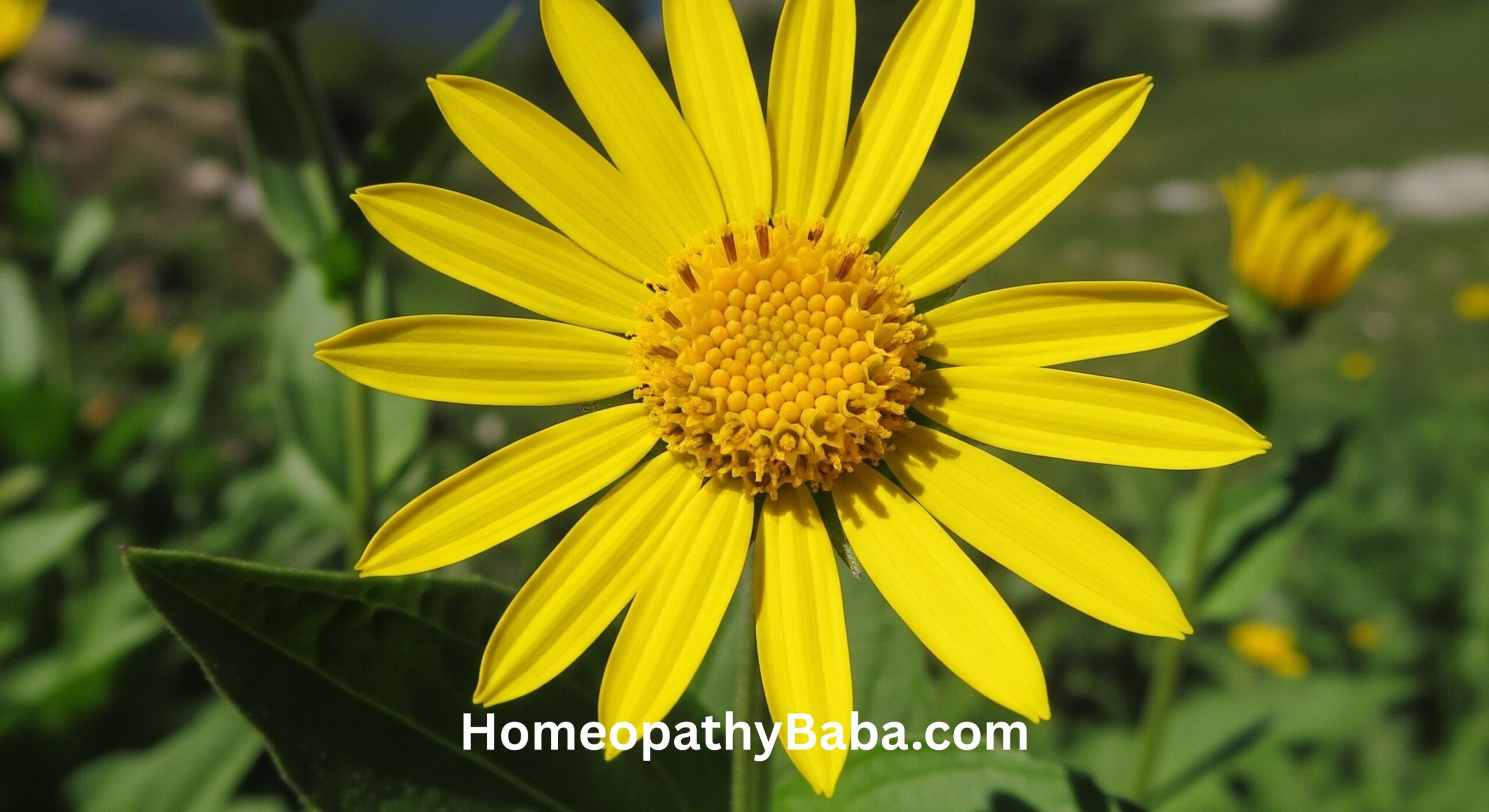
This article is for informational purposes only and does not constitute medical advice. Please consult with a qualified healthcare professional before starting any new treatment. The author of this post is Dr. M Hasham Ahmed.
If there is one remedy that belongs in every homeopathic first-aid kit, it is Arnica montana. Derived from a mountain daisy, Arnica has been used for centuries to address injuries, and today it is one of the most well-known and widely used homeopathic medicines in the world. This guide will explore what Arnica is, its primary uses in homeopathy, and why it’s considered an essential for every household.
What is Arnica Montana?
Arnica montana, also known as mountain tobacco or leopard’s bane, is a perennial flowering plant from the sunflower family that grows in the mountainous regions of Europe and Siberia. In its raw form, the plant is toxic if ingested. However, through the homeopathic process of serial dilution and succussion (vigorous shaking), it is transformed into a safe and powerful remedy.
Key Homeopathic Uses for Arnica Montana
In the world of homeopathy, Arnica is the king of remedies for trauma, both physical and emotional. Its primary sphere of action is on the muscles and blood vessels after an injury.
1. Bruises and Swelling
This is Arnica’s most famous use. It is the first remedy often considered for bruises (ecchymosis) resulting from falls, blows, or injuries. It is thought to help reduce the discoloration, swelling, and soreness associated with bruising by supporting the body’s natural healing process.
- Keynote symptom: A “sore, bruised” feeling, where the affected part feels as if it has been beaten. The person may say they are “fine” but not want to be touched.
2. Muscle Soreness and Overexertion
After a strenuous workout, a long hike, or any unusual physical activity, muscles can feel sore and achy. Arnica montana is often used to soothe this kind of muscle strain. Many athletes keep it on hand to help with recovery after intense training or competition.
- Keynote symptom: The bed or chair feels too hard, and the person feels restless, trying to find a comfortable position.
3. Sprains and Strains
For minor sprains and strains, Arnica is often the first remedy given to address the initial shock and trauma to the tissues, helping to manage pain and swelling in the early stages.
4. Post-Surgical Recovery
Under the guidance of a professional, Arnica is sometimes used to help with the soreness, bruising, and swelling that can occur after surgical or dental procedures. It is thought to help speed up the recovery process by managing the immediate effects of tissue trauma.
Forms of Arnica: Pellets vs. Topical
Arnica is available in two main forms:
- Oral Pellets/Tablets: These are taken internally and work systemically throughout the body.
- Topical Gels, Creams, or Oils: These are applied directly to the skin on the affected area. Important: Topical Arnica should never be applied to broken skin or open wounds.
A Must-Have for Every Home
From minor kitchen bumps to children’s playground falls, the applications for Arnica montana are endless, making it a true first-aid essential. Having it on hand means you are always prepared to naturally address life’s little injuries.
Shop Our Arnica Montana Products
Final Disclaimer: The uses described are based on traditional homeopathic practice. This information is not a substitute for professional medical advice. Always consult a healthcare provider for serious injuries.